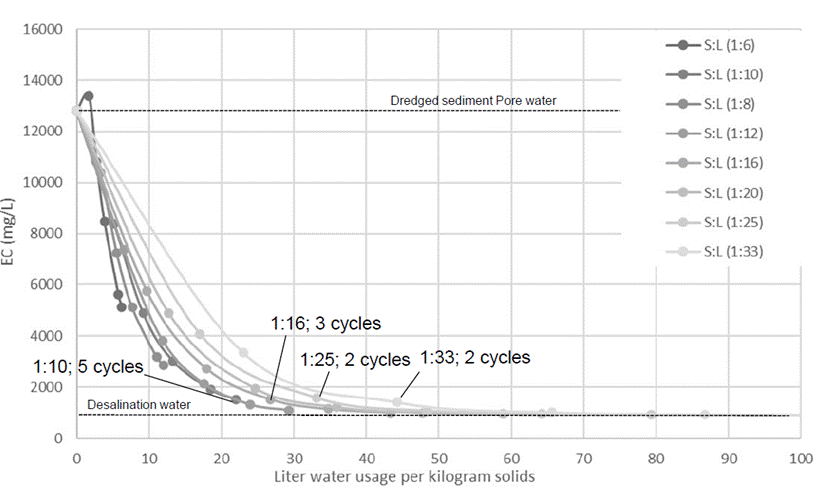Maria Barciela-Rial1*, Claudia Mc Leod1 and Wouter R.L. van der Star3
1Built Environment Academy, HAN University of Applied Sciences, The Netherlands; 2 Deltares, The Netherlands
*corresponding author: maria.barcielarial@han.nl
Introduction
Substantial quantities of sand are utilized in industrial applications and infrastructure projects. As a result, sandy sediments are becoming increasingly scarce, while billions of cubic meters of fine cohesive sediments are dredged globally to maintain navigation channels. This necessitates the increasing use of these fine sediments in infrastructure development. However, compared to sand, the use of dredged cohesive sediments is more complex due to their heterogeneous composition, which includes water, fines, sand, organic matter, gas, and other components. Marine sediments also contain salt, which influences the physical and (bio)chemical behavior of the mixture.
Objective and Methods
This paper presents the lessons learned from desalination in three pilot projects with different beneficial use objectives (agriculture, flood defense, ceramic industry): Raising Agricultural Lands, Growing Dike, and Sea Silt Ceramics.
Desalination experiments were conducted using dredged sediments from three locations. For the Raising Agricultural Land Pilot, sediment from Eems Haven was mixed with fresh water at a 1:6 ratio and allowed to settle in glass columns. In the Growing Dike Pilot, Lauwersoog Harbour sediment was mixed using a rotating cement mixer. Finally, in the Sea Silt Ceramics Pilot, Delfzijl Zeehavenkanaal sediment was mixed at various solid-to-liquid ratios in test beakers. Salinity and ion concentration were measured at different stages and dilutions to assess desalination effectiveness.
Results
The experimental outcomes demonstrate that an immediate reduction in salt content is achieved through rinsing with fresh water. It is also observed that the decrease in salinity is directly proportional to the water ratio. While the desalination process begins immediately, the removal of nutrient ions with larger valence is a more gradual process. The larger the water ratio (dilution), the greater the decrease in salinity, although there is an optimum point. Moreover, the same reduction in salinity can be achieved with different combinations of dilutions and rinsing cycles, but each combination requires a different amount of fresh water per kilogram of solids.
This study demonstrated that desalination of dredged sediment has a lot of potential.To economize the desalination process, mechanical dredging is preferred over hydraulic dredging. However, it is crucial to understand the optimal soil parameters. The method should be customized to meet specific objectives, which may sometimes conflict. For instance, in agriculture, it is essential to maintain suitable nutrient levels and organic matter while reducing salt content to prevent groundwater salinization, thereby making the soil suitable for a wider variety of crops.

Liters of water used per kg of solids and electrical conductivity










